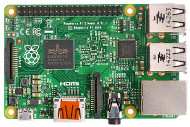Install IntelliJ IDEA on Raspberry Pi
Posted in Linux, Programming on June 11th, 2015 by Pavel – 15 CommentsThis article shows how to install IntelliJ IDEA on Raspberry Pi. The instructions are also applicable for other IDEA-based IDEs like PyCharm, RubyMine, PhpStorm, WebStorm, CLion, etc.
At first, the idea of installing a full-fledged, contemporary IDE on Raspberry Pi may seem unrealizable. Raspberry Pi boards are incredibly small, so it’s hard to believe that those devices are apt for such a task. Nevertheless, in reality, Rasperry Pi can do much, much more than blinking a LED.
After trying out Scala on Raspberry Pi for some time, I configured my Rasperry Pi to run IDEA & Scala plugin for the recent ScalaDays conference. While it was initially intended to be just a “proof of concept”, it turned out that we were able to open the Scala plugin project itself (which is pretty large, and includes all IDEA CE sources) and to comfortably use this setup for most feature demonstrations. Obviously, it’s unreasonable to expect desktop-like performance from such a device, however I happen to successfully use a similar environment on EEE PC which was hardly faster.
The instructions rely on the following keystones that make the undertaking possible (and even practical):
- Raspberry Pi 2 Model B, which offers a 900MHz quad-core CPU and 1GB of RAM (this one is for the “practical” part, yet you may try to use Rasperry Pi 1 as well).
-
Oracle JDK 8 for ARM (with HardFP, JIT and server VM), which provides >10X performance boost (comparing to Zero VM from OpenJDK).
-
Small, but essential modifications that enable IntelliJ IDEA to run on ARM systems, like Raspberry Pi (you may use the same techniques for other ARM-based microcomputers).
Update: we’ve fixed the incompatibilities, so IDEA 15 (or later) should be able to run on ARM architecture (including RaspberryPi) out-of-the-box.
Contents:
Some of the commands will require root privileges, so either login as root user or use sudo to start an interactive shell via sudo -i.
Continue reading →




